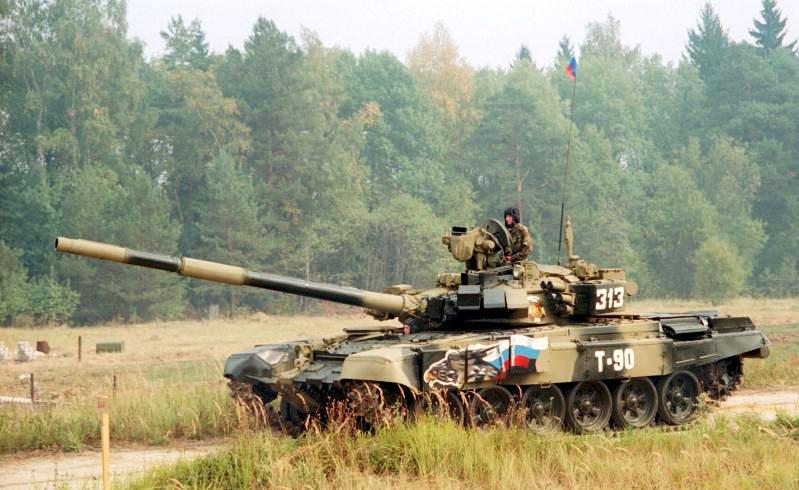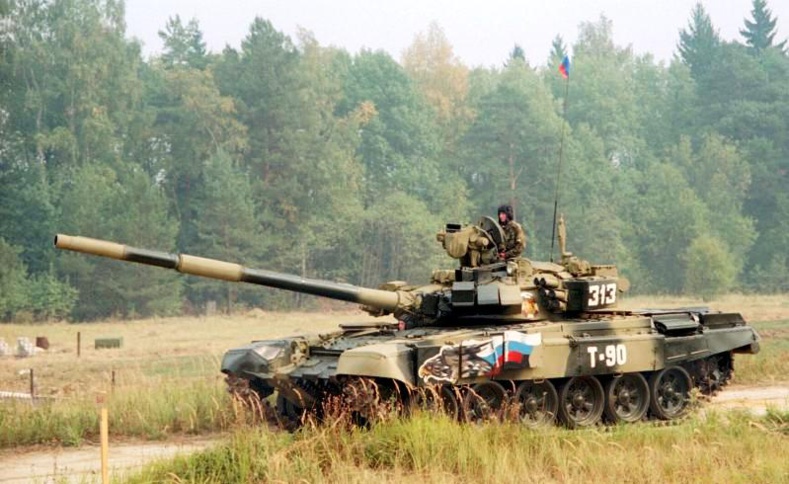The United States represents Europe’s most formidable competition, with an unequalled defense research budget which exceeds three-fold all of the European ones combined. European firms are somewhat protected from US commercial hegemony on the global market by the US’s own restrictions on exports (destined to maintain American technological superiority), but even then, the competition is tough. For instance, Italy (with the Eurofighter) and Sweden (with the Saab Gripen) are currently pitching their most modern aircrafts to the Bulgarian air force, while the US are competing with modernized versions of their oldest models (F-16s and F-18s). But new forces are also at play. After a two-decade lull, following the collapse of the Soviet Empire, the Russian defense industry is back on its feet and once again flooding the global market with military equipment which stands a high chance of bagging many armaments deals in developing countries. China, which has benefitted technology transfers from Russia, is also disrupting the global market and flooding the world with export-suitable equipment. Finally, Turkey has achieved the creation of its rationalized and comprehensive defense industry, after Ankara’s decision to enter the market and shape up its industry. Defense analyst Mustafa Kirikciogluwrites “While domestically developed air, land and marine platforms contribute to Turkey's national security and boost its deterring power, they also boost the economy with increasing exports [...] In recent years, Turkey took a noticeable leap forward with innovative engineering moves in the defense industry and domestically-developed military equipment and combat vehicles in almost all fields of warfare, most notably the Altay Main Battle Tank, the ATAK T-129 Tactical Attack and Reconnaissance Helicopter and the ANKA unmanned aerial vehicle”.
Europe, on the other hand, is suffering from lack of rationalization and absence of strategy, placing it in a difficult position to fight off the competition. Many of the firms on the European defense scene are small private companies, in niche markets, whose survivability is jeopardized by the lack of strategic coordination. The above example of Bulgaria illustrates this problem well. The Eurofighter is fighting the Gripen, and vice versa, as well as the American contenders, when Europe could be teaming up to form a better chance of winning the deal. In the current configuration, at least one of these two European companies is going to suffer a loss. And the rest of the military industry is in a similar state, showing the lack of “big picture” view. Europe currently has a number of shipyards, with various capacities, some swinging in and out of the military segment, leading to a confused situation and much loss of energy and efficiency. The recent BIPE report states that “As a result of past mergers and acquisitions mainly along national lines, the leading producers offer equipment that is not necessarily standardized, since each country or producer pursues its own technology lines. Poor European cooperation also implies duplication of expenditures, misallocation of (scarce) public resources and the maintenance of excess capacities at EU level, whilst the national orientation of many firms prevents them from benefiting from economies of scale.” The wishful thinking which intends to unify Europe under common diplomacy and defense has failed consistently, including in the integration of industrial defense capacities.
The first signs of rationalization with Nexter and KMW, however, have come, with France and Germany leading the way. With an increasing level of communication and partnerships between the two champions of mechanical armament production, Paris and Berlin are ending their traditional head-on competition and lifting Europe’s capacities to defend its market segment by cooperating. German KMW and French Nexter have formed a 50/50 joint venture with KNDS and have already something to show for it, for the upcoming MGCS deal. Defense analyst Sebastian Sprenger writes : “According to a brief Rheinmetall statement, on the table is the takeover of KMW in the context of its partnership with French tank maker Nexter, known under the name KNDS. KMW and Nexter each own 50 percent of their Franco-German joint venture. KNDS and Rheinmetall were expected to pitch separate design proposals next year for the Main Ground Combat System, a novel tank meant as one of three signature military projects propelling the Berlin-Paris defense partnership.” If this one-off initiative were to develop into a full-scale strategy, Europe could achieve the same level of efficiency on all sub-markets. A clear division of tasks would considerably strengthen Europe’s overall position. France has the recent military experience, power and expertise (through numerous deployments, including with European allies) to head a continent-scale strategy in the defense industry, along with an indissociable industrial capacity of its own which competes well with the German one, in land defense systems. It is therefore in capacity to form an industrial strategy which would benefit all European companies and firms, instead of leaving their destinies exposed to luck, good or bad. France or Germany would be unable to meet current demand on their own (let alone the demand which would arise from a rationalized market) and would therefore necessarily produce side-by-side.
Additionally, Brussels is making a small fund available to EU member countries to develop defense projects, as reported by defense analyst Tom Kington: “The funding, which would double to one billion euros annually from 2020, would be available for programs involving a minimum of three companies based in a minimum of two EU member states — thus encouraging cross border cooperation and even mergers. The aim is to get countries to launch European programs, ending wasteful duplication which has led to member states fielding 17 different battle tanks, as well as 29 different frigates and destroyers according to the EU.” So industrial capacities are there, budgets are there, all that is left to establish is strategy and leadership. France, and even more so Germany, will rely on industrial resources from its European partners. Countries which are active on the defense scene, such as Italy, Portugal and Spain, must reinforce their industrial links with their French and German partners - thus the European Defense scene will be reinforced, and all involved countries will benefit it.On a political level, the respective positions of eachcountries about Russia, Crimea, or even Turkey must be taken into account. And France and Germany are not on the same page concerning those issues.
The current nascent market consolidation means that defense firms which fail to work with their partners and organize their defense will quickly be absorbed by their foreign counterparts, which are receiving unflinching support from their powerful respective States. European firms are currently waging war on each other, when it would be far more in their interest (and Europe’s) to organize the continental industry and join their efforts against emerging countries which are breathing down their necks. The last firms to unite with their European counterparts will be the first absorbed by their foreign competition.
Europe, on the other hand, is suffering from lack of rationalization and absence of strategy, placing it in a difficult position to fight off the competition. Many of the firms on the European defense scene are small private companies, in niche markets, whose survivability is jeopardized by the lack of strategic coordination. The above example of Bulgaria illustrates this problem well. The Eurofighter is fighting the Gripen, and vice versa, as well as the American contenders, when Europe could be teaming up to form a better chance of winning the deal. In the current configuration, at least one of these two European companies is going to suffer a loss. And the rest of the military industry is in a similar state, showing the lack of “big picture” view. Europe currently has a number of shipyards, with various capacities, some swinging in and out of the military segment, leading to a confused situation and much loss of energy and efficiency. The recent BIPE report states that “As a result of past mergers and acquisitions mainly along national lines, the leading producers offer equipment that is not necessarily standardized, since each country or producer pursues its own technology lines. Poor European cooperation also implies duplication of expenditures, misallocation of (scarce) public resources and the maintenance of excess capacities at EU level, whilst the national orientation of many firms prevents them from benefiting from economies of scale.” The wishful thinking which intends to unify Europe under common diplomacy and defense has failed consistently, including in the integration of industrial defense capacities.
The first signs of rationalization with Nexter and KMW, however, have come, with France and Germany leading the way. With an increasing level of communication and partnerships between the two champions of mechanical armament production, Paris and Berlin are ending their traditional head-on competition and lifting Europe’s capacities to defend its market segment by cooperating. German KMW and French Nexter have formed a 50/50 joint venture with KNDS and have already something to show for it, for the upcoming MGCS deal. Defense analyst Sebastian Sprenger writes : “According to a brief Rheinmetall statement, on the table is the takeover of KMW in the context of its partnership with French tank maker Nexter, known under the name KNDS. KMW and Nexter each own 50 percent of their Franco-German joint venture. KNDS and Rheinmetall were expected to pitch separate design proposals next year for the Main Ground Combat System, a novel tank meant as one of three signature military projects propelling the Berlin-Paris defense partnership.” If this one-off initiative were to develop into a full-scale strategy, Europe could achieve the same level of efficiency on all sub-markets. A clear division of tasks would considerably strengthen Europe’s overall position. France has the recent military experience, power and expertise (through numerous deployments, including with European allies) to head a continent-scale strategy in the defense industry, along with an indissociable industrial capacity of its own which competes well with the German one, in land defense systems. It is therefore in capacity to form an industrial strategy which would benefit all European companies and firms, instead of leaving their destinies exposed to luck, good or bad. France or Germany would be unable to meet current demand on their own (let alone the demand which would arise from a rationalized market) and would therefore necessarily produce side-by-side.
Additionally, Brussels is making a small fund available to EU member countries to develop defense projects, as reported by defense analyst Tom Kington: “The funding, which would double to one billion euros annually from 2020, would be available for programs involving a minimum of three companies based in a minimum of two EU member states — thus encouraging cross border cooperation and even mergers. The aim is to get countries to launch European programs, ending wasteful duplication which has led to member states fielding 17 different battle tanks, as well as 29 different frigates and destroyers according to the EU.” So industrial capacities are there, budgets are there, all that is left to establish is strategy and leadership. France, and even more so Germany, will rely on industrial resources from its European partners. Countries which are active on the defense scene, such as Italy, Portugal and Spain, must reinforce their industrial links with their French and German partners - thus the European Defense scene will be reinforced, and all involved countries will benefit it.On a political level, the respective positions of eachcountries about Russia, Crimea, or even Turkey must be taken into account. And France and Germany are not on the same page concerning those issues.
The current nascent market consolidation means that defense firms which fail to work with their partners and organize their defense will quickly be absorbed by their foreign counterparts, which are receiving unflinching support from their powerful respective States. European firms are currently waging war on each other, when it would be far more in their interest (and Europe’s) to organize the continental industry and join their efforts against emerging countries which are breathing down their necks. The last firms to unite with their European counterparts will be the first absorbed by their foreign competition.















